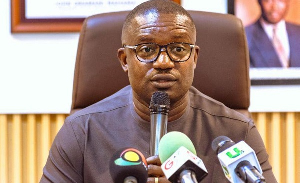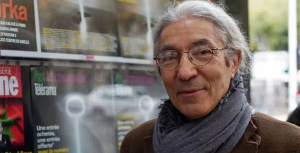The prosperity of every people is highly dependent on the economic potentials within their jurisdiction. And the economy of a people nonetheless rests on variety of factors including; the mainstream productivity their environment offers.
In the last three weeks or about so, the Buipei- Yapei bridges have been sounding alarming bells in the media, from traders, drivers, civil and public servants and the general population that per their engagements will have to use those two bridges to cross to southern Ghana and from Northern Ghana most especially to Tamale and its environs in the Northern Region, Bolgatanga and its environs in the Upper East Region with more than four frontiers with neighbouring and sister African countries to North Africa and beyond.
BACKGROUND
The two bridges have served the economic needs of these areas and continue to do so especially at these critical moments of West Africa States Union on trade and industry and most especially when the routes for some member states go through the two bridges.
Burkina Faso, Mali, Niger, Togo (North-West), among other countries are sister countries that mostly patronise this route to cart goods to and from their countries. Burkina Faso in the last decade has been using the Ghana Ports to transact business because of the closeness and convenience the Ghana Ports offer her business community. She carts hundreds of tonnes of goods daily via the Yapei-Buipei bridges.
Goods such as; mining equipment, new and used vehicles, cement products, cattle, food stuff, and many other imports come through Ghana’s ports and transported by road to their destinations. So are the other sister countries such as Mali and Niger.
This is not the first time rehabilitation works on the Buipei-Yapei bridges have been done. Last year, the bridges were closed twice for maintenance works. In all these temporal half closures, the inconveniences were enormous even though it was designed to allow movement of vehicles from either side of the two bridges.
At 1400 hours each working day, the bridges were closed to vehicular traffic. These arrangements were done consistently, and it enabled transport owners and Transport Associations to plan their movement which eventually eliminated stress on travelers who used that route.
Traders and their stuff were secure, prices of food items were stable, inconveniences drastically at minimal and little was talked about these bridges in the media.
This time round, arrangements slated to do the maintenance works was too bad, that it would be unfair to let go this irresponsible attitude of managers and authorities towards public infrastructure development and respect for their users.
The two bridges are counted among the best in terms of income generation, considering tolls collected, growing businesses around the toll booths, chop bars, rest stops, fresh farm produce, and many market places were virtually shut down following complete closure of the bridges.
The bridges were constructed many years ago on the White and Black Volta Rivers with the objective of ensuring the smooth movement of small to heavy duty vehicles to cross to and from southern to northern Ghana and vice versa. Key on the framework was trade, with little expectation that neighbouring countries would heavily patronise it.
The Economic Community of West African States (ECOWAS) trade protocols virtually disenfranchised Ghana from exerting and exercising monopoly on the trunk road from the Tema Habour, which is the industrial hub of Ghana to the Paga Border where member states are by law to enjoy equity on that road without any deliberate hitches. T
he two bridges thus are compelled to consume these unplanned weights hence the recent deterioration and instability on the bridges.
The Ghana News Agency reported in November of undue pressure and inconveniences the closure of the bridges posed to travelers, commuters and other users of that road. In fact, as the closure entered the fifth day, there was no sign of movement of construction equipment to the two sites to start the rehabilitation works which was cited as reasons by the Ministry of Roads and Highways.
Major users of the road such as transport companies including; the State Transport Company, OA Travel and Tours, the GPRTU, PROTOA, as well as transport companies in Burkina Faso, Mali and Niger were not formally consulted. Indeed as key users of the road, they should have been part of the decision to close the bridge for work to start.
By failing to organise such stakeholder engagements, clearly depicted the lukewarm attitude and disrespect for dialogue by officials of the Road Ministry.
If these consultations were made, certainly some of the stakeholders could have suggested better and convenient routes to use. For instance, there is a route through Daboya that links the North western parts of the Northern region such as Walewale and the South Eastern parts of the Upper East Region such as the Fumbisi Valleys through the “Overseas” road.
There is a damaged bridge on that stretch of the road that links these areas mentioned. So, the prudent measures would have been to fix this bridge, grade any other link road and make them motorable.
Again, the Bolgatanga-Wa road is as bad as one can imagine. The less than 200 kilometre road takes about five to seven hours to drive on plus the additional hours spent from the Wenchi-Bamboi-Sawla-Wa road, just because the road is not motorable.
The Ministry should have deployed graders on the road to grade it to make it motorable, considering the number of vehicles that would be using that road within the space of the closures of the bridges. The less the Yeji route is talked about the better. And for the Eastern Corridor route. It is suggested that immediate investigations should be conducted into why the so much was talked about road was nothing to really talk about.
Was money wasted there too as usual? Who should be held to account for that? Was it the same everyday business of boxing home from the national purse? It is greatly possible that if this route was worked on as talked about, this big inconvenience would not have come because most vehicles would have preferred that route and the bridges also enjoyed some minimum use.
It is in this regard that the appeal by the Bishops Conference to government to as a matter of urgency rethink, relook, and reconsider decisions on the Eastern Corridor route and get contractors to move to site must be unconditionally applauded and supported. The Bishops call should never be undermined by any people, development oriented and freedom seeking government to immediately fix such economically viable route on the stretches of this country.
Fortunately, or otherwise, and indeed God being so gratifying gave Ghana a new leader whose political party was a craving critic of the previous administration on the Eastern Corridor route which has become an eating point for political parties.
The trust that the New Patriotic Party (NPP) government which pursues development in freedom and craves a bigger indulgence of its instincts, with such claims of prudent economic prowess would effectively manage issues surrounding the Eastern Corridor route to bring the needed freedom in trade through uninterrupted movement of humans, goods and services.
THE ECONOMIC IMPACT, INCONVENIENCES AND LOSSES
Traders counted losses everyday and the December economy got worse each day. Prices of goods sky rocketed and the mess was uninterrupted. For food stuff, especially vegetables, they got rotten even before they got onto the market.
Nobody took fresh tomatoes in Bolga in the last three weeks of the closure. Animals had field’s days as they enjoyed rotten fruits and vegetables on gratis. Their owners didn’t have to hustle for food to feed them, all because of irresponsible attitude of some office holders.
The price of a bag of cement shot up from GHC32 to GHC38, GHC39 and GHC40 depending on the brand. Prices of all varieties of imported rice increased. Some increased by as much as GHC20 to GHC60 for 50kg bag size of rice. Fares shot up inconsiderably by day reaching a height of GHC130 from previous maximum of GHC100.
The situation was so discouraging and disorganised such that fear and hopelessness were guaranteed assurances for hardworking and willing traders who managed their own purse from the hiking interest rates on loans they acquired for their businesses. Such was the horrifying situation for traders and commuters plying the Buipe-Yapei route for commerce.
Ideally, the economic impact and inconveniences created by the closure of the bridges, which nonetheless was vital and essentially good for trade development, could have been executed and managed so well in order to do away with the avoidable challenges that accompanied it.
Almost every sector of the economy of the three regions of the north and neighbouring sister countries suffered one negative blow or the other during the hard times of the closure of the bridges. The collection points were virtually empty dissipating accruable tolls within the closure period.
In fact, the country might have missed collecting hundreds of thousands of Ghana Cedis in the about two months closure of the bridges. So did many traders lose profit margins, while hundreds of residents suffered as end users of the products of trade?
Even though the temporal closure of the bridges sparked porches of trades, the inconvenience was enormous and widely affected the already existing markets on that route. Kintampo; which served as the central resting point for travelers, within the period went dead. Fruits and food stuff sellers who raked incomes from commuters on that route became suddenly irrelevant and out of business.
Those who were experienced enough moved their businesses as far as Yapei to benefit from the arrangements made by transport companies to cut passengers, goods and services through transferring content to other vehicles to the other sides of the bridge.
POOR PUBLIC RELATIONS/COMMUNICATION
There was very poor communication and information dissemination before, during and after the closure of the bridges.
Sadly, government which is believed to have good acumen for information handling did poorly from every estimation, in communicating such international information to the public. It started with the circulation of speculation on the closure. Every serious communicator will surely not give any serious attention to such information considering the quick manner untrue statements are published on social media.
The communication engineers around the Road Ministry failed the public by circulating such vital information on social media whereas they could have issued proper press statement directed to the press earlier, in order to cure any backlog of rumours such as what discerned before the closure.
TECHNICAL MISINFORMATION
Another area that affected commuters as result of the closure of the two bridges was technical misinformation. There were several angles to the Ministry’s reasons for the closure of the bridges. Whereas it was generally held that the two bridges were not safe for vehicular use, the absence of specification of the works on the bridges allowed for unfounded speculations.
Some said there was to be the construction of fresh bridge to replace the old ones; a situation that spread the rumours freely and uncompromisingly.
Engineers, at the Ministry do not only owe Ghanaians, especially tax payers reasons why previous maintenance works failed, but most importantly, how much was involved in the two previous works done on those bridges, why the bridges deteriorated so quickly and how assuring recent maintenance work would last.
Probe into the practice where managers of public offices draw escalating budgets for shoddy work ought to start from the Buipe-Yapei bridge maintenance works from previous to current ones.
The NPP government promised Ghanaians countless times to fight corruption in its entirety. The challenge is now.
Probing the cost of maintenance works on the Buipe-Yapei bridges and making such accountability public, is admirable, and efficient way to start the fight against corruption. For such public office holders to spin and exaggerate conditions at the bridges and compel government to assume urgency in the situation was only hoax to get government to throw in as usual possible unaccounted imprest for looting.
If it was not for imaging and rehearsing fraudulent acts, why was the bridge closed down for about a week without a single tool on site and using the police and the military to block the two bridges only to frustrate commuters and traders to force them to express their anger against government?
The good news or bad revelation is that the diversion revealed poor road construction on the Fufulso-Sawla road, where as result of the heavy trucks using that part of the road from the initial state of the closure, exposed the shoddy works done there.
Portions of that road, especially the margins, had sunk deeply, thereby exposing the inferiority in the quality of work. But for the closure, this heinous activity would not have been exposed.
In this regard, who measured the quality of work, who confirmed the quality of the work and who endorsed payment of contractor (s) who worked on that stretch on the Sawla-Fufulso road. Answers to these questions are, but simple ways of getting good results and value for the tax payers’ money spent.
Mr Adivila indicated that government must not contend with the rehabilitation works on the bridges but must work on other alternative routes to save the bridges and prolong their live spun. He suggested the redirection of heavy weighing vehicles from using the Buipe-Yapei road to use the central route, use the ferry/ Panton through the Makango route and connect to Tamale.
Indeed, the Makango route had been under-utilised for long until the diversions through the area. Workers there were virtually on holidays and never let their salaries go on holidays. A diversion and improvement of services at the Ferry station could improve the revenue generated from services rendered to clients.
In spite of the difficulties and the level of inconveniences caused by the closure of the bridges, it will be unfair to conclude that this Christmas was too bad. As usual of Ghanaians, difficulties, inconveniences and bad events only last a short while and life must continue, because, the drinking spots in Bolgatanga and its environs are still functioning and full to capacity.
It is important to note that, whether Christmas or no Christmas, difficulties, inconveniences and stress cannot put man down.
In spite of the criticisms poured on the Road Ministry, it is important to commend them for staying on time and keeping to their promise to get all works done and to open up the bridges before Christmas. Kudos, for staying in tune but don’t forget to render accounts to the tax payer on your work.
General News of Wednesday, 3 January 2018
Source: ghananewsagency.org













